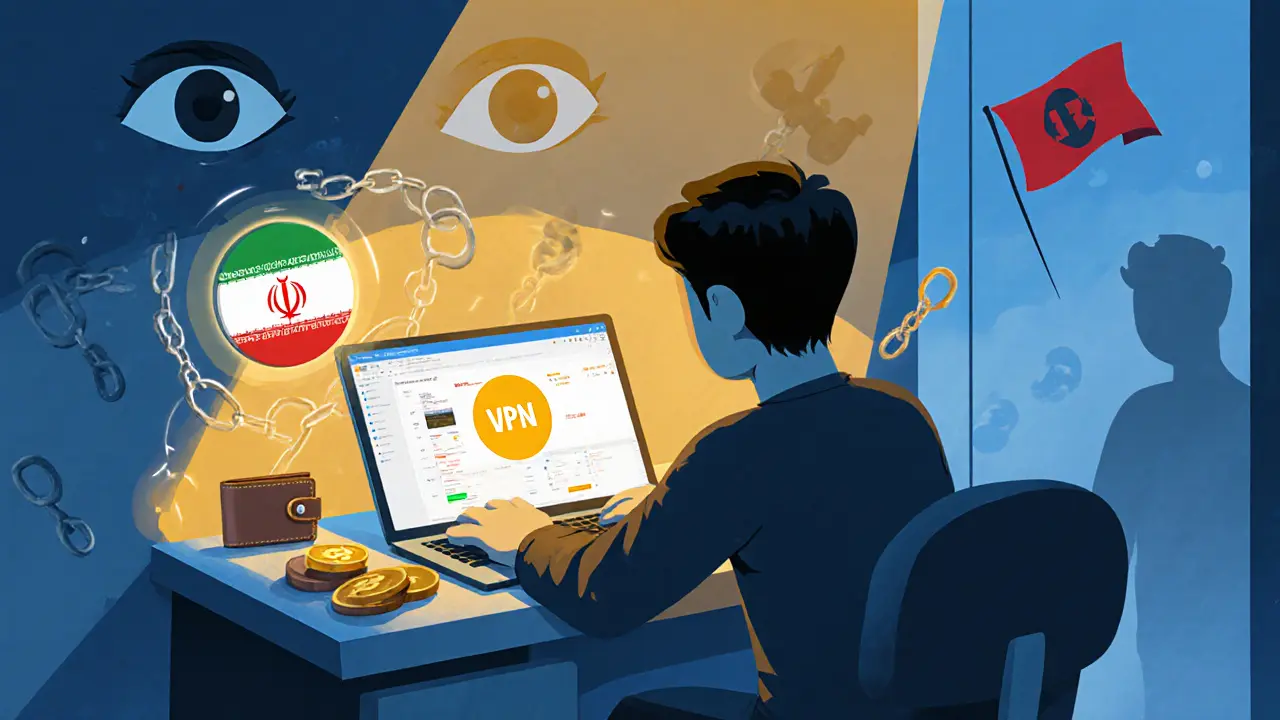DAI Polygon Iran: Crypto, Stablecoins, and Restrictions in Iran
When people in Iran use DAI, a decentralized stablecoin pegged to the US dollar, built on Ethereum and Polygon. Also known as Dai Stablecoin, it helps users protect savings from inflation and bypass currency controls without relying on banks. DAI isn’t just another crypto—it’s a tool for financial survival. In countries like Iran, where the local currency has lost over 80% of its value in five years, holding USD-backed assets like DAI is often the only way to preserve wealth. And because DAI runs on Polygon, a fast, low-cost Ethereum scaling network that supports DeFi apps and token transfers. Also known as MATIC network, it enables near-instant, cheap transactions even when gas fees on Ethereum are sky-high. That’s why Iranians turning to crypto don’t just pick any chain—they pick Polygon for speed and affordability.
But using DAI on Polygon in Iran isn’t simple. The government bans most crypto exchanges and has cracked down on peer-to-peer trading. While DAI itself isn’t illegal, using it to send money abroad or buy goods from international sellers can trigger sanctions violations. The U.S. Treasury’s OFAC lists Iranian individuals and entities involved in crypto, and even using a non-custodial wallet like MetaMask can raise red flags if linked to sanctioned activity. That’s why many users rely on decentralized bridges, OTC traders, or Telegram-based networks to move DAI without touching centralized platforms. It’s not about anonymity—it’s about avoiding arrest.
Other stablecoins like USDT and USDC are also used in Iran, but DAI stands out because it’s fully decentralized. No company controls it. No bank can freeze it. That makes it more resilient when exchanges get shut down or payment processors cut off Iranian users. Polygon’s low fees make it ideal for small, frequent transfers—like paying for cloud services, buying software subscriptions, or sending remittances to family overseas. But here’s the catch: most guides on how to use DAI on Polygon assume you’re in a country with open access. In Iran, you need to know the hidden risks: wallet de-anonymization, SIM swap attacks, and fake airdrop scams pretending to help you get DAI. These aren’t theoretical—they’ve cost people their life savings.
What you’ll find in the posts below isn’t a list of how-to videos or shiny tutorials. It’s real talk about what works and what doesn’t when you’re trying to use crypto under pressure. You’ll see reviews of exchanges that are risky for Iranians, breakdowns of how asset seizures work, and warnings about platforms that look legitimate but are designed to trap users in sanctioned regions. There’s no sugarcoating. No hype. Just facts about what’s happening on the ground—and how to protect yourself when the rules are written by someone else.
DEX Access for Iranian Citizens: How to Use Decentralized Exchanges Amid Restrictions
Iranian citizens are turning to decentralized exchanges to bypass government restrictions and sanctions. Learn how DEXs like QuickSwap on Polygon, combined with DAI and VPNs, are becoming the only reliable way to trade crypto safely in Iran.
